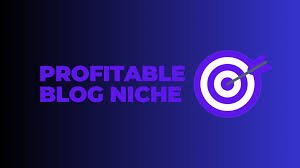Blogging has become one of the most popular ways to share ideas, build a personal brand, or even create a profitable business. Whether you want to blog for fun, to promote a business, or to establish yourself as an authority in a specific niche, starting a blog can be a rewarding and transformative experience. If you’re new to blogging, it can feel overwhelming at first. But don’t worry! In this guide, we’ll break down the basics of blogging and provide you with the essential steps you need to take to start your own successful blog.
1. Choose Your Blog Niche
The first step in starting a blog is selecting a niche. Your niche is the specific topic or subject you’ll focus on throughout your blog. Choosing the right niche is crucial because it will determine your target audience, the type of content you create, and how you can monetize your blog in the future.
When selecting your niche, consider the following:
- Your Passion: What topics do you enjoy talking about or researching? Blogging about something you’re passionate about will make the process more enjoyable and sustainable.
- Audience Demand: While passion is important, it’s also crucial to consider whether there’s a demand for the topic. Look at search trends and existing blogs to assess how many people are interested in your topic.
- Profit Potential: Some niches are easier to monetize than others. For instance, niches like personal finance, health, and technology tend to attract lucrative opportunities for affiliate marketing or sponsored content.
Pro Tip: Take time to narrow down your niche to ensure that you’re targeting a specific audience, which will help you stand out from the competition.
2. Pick a Blogging Platform
Once you’ve chosen your niche, the next step is selecting a blogging platform. The blogging platform you choose will determine how you create and manage your blog. Here are some popular options:
- WordPress.org: The most popular and flexible blogging platform. You have complete control over your website, and it allows for customization with themes and plugins. It’s ideal for those who want full control and the ability to monetize their blog in the future.
- Wix: A drag-and-drop website builder that’s beginner-friendly. It’s suitable for people who prefer a more hands-off approach to the technical side of blogging.
- Blogger: A free platform owned by Google. While it’s easy to use, it’s more limited in terms of customization and scalability.
- Medium: A simple, no-frills platform for writing. It’s perfect if you want to focus purely on writing without worrying about the technical side of managing a blog.
Pro Tip: If you’re serious about blogging and eventually turning it into a business, WordPress.org is the most recommended platform due to its flexibility and scalability.

3. Pick a Domain Name and Hosting
Your domain name is your blog’s address on the internet (e.g., www.yourblog.com). It’s important to choose a name that’s memorable, easy to spell, and reflects the content or niche of your blog. Ideally, your domain name should be short, catchy, and include relevant keywords if possible.
Along with your domain name, you’ll also need web hosting to store your website files and make your blog accessible online. Hosting companies provide the infrastructure to keep your site up and running. Some popular hosting providers for WordPress blogs include:
- Bluehost
- SiteGround
- HostGator
Pro Tip: Look for hosting providers that offer easy WordPress installation, great customer support, and reliable uptime.
4. Design Your Blog
Your blog’s design is the first thing visitors will notice, so it’s essential to create a clean, visually appealing layout. Many blogging platforms, like WordPress, offer free and paid themes that you can easily customize. Here are a few tips for designing a user-friendly blog:
- Use a responsive design: Ensure that your blog looks good on both desktop and mobile devices.
- Prioritize usability: Make sure your navigation is simple, and visitors can easily find your content.
- Focus on readability: Choose a font that’s easy to read and a color scheme that’s visually pleasant.
Pro Tip: Choose a theme that aligns with your blog’s personality and purpose. If you’re blogging about health, for example, a clean and minimalist design may be more suitable than a flashy, complex one.
5. Create High-Quality Content
Content is king when it comes to blogging. No matter how well-designed your blog is, it won’t be successful without great content. Your content should provide value to your readers, answer their questions, and solve their problems. Here are some tips to create high-quality blog posts:
- Write for your audience: Keep your target audience in mind and create content that addresses their needs and interests.
- Be consistent: Post regularly, whether it’s once a week, bi-weekly, or monthly. Consistency helps keep your readers engaged.
- Focus on SEO: Implement basic SEO (Search Engine Optimization) strategies to help your content rank higher in search results. This includes using relevant keywords, writing compelling titles, and optimizing images.
Pro Tip: Try to write evergreen content—posts that remain relevant over time. This will help your blog continue to attract traffic in the long run.

6. Promote Your Blog
Once you have great content on your blog, you need to promote it to attract visitors. Some effective promotion strategies include:
- Social media: Share your blog posts on social media platforms like Facebook, Twitter, Instagram, and Pinterest.
- Email marketing: Build an email list to notify subscribers when you publish new posts or have special offers.
- Networking: Connect with other bloggers or influencers in your niche to expand your reach through guest posts or collaborations.
Pro Tip: Start building your email list from day one by offering a free resource (like an eBook or guide) in exchange for visitors’ email addresses.
7. Monetize Your Blog
Once your blog starts gaining traffic, you can explore ways to monetize it. Some common monetization methods include:
- Affiliate marketing: Promote products and earn a commission when people make a purchase through your affiliate links.
- Display ads: Use ad networks like Google AdSense to display ads on your site.
- Sponsored content: Partner with brands to write paid posts that promote their products or services.
- Sell products or services: Create and sell your own digital products, like eBooks, courses, or merchandise.
Pro Tip: Don’t rush monetization. Focus on building a strong audience first, and then introduce monetization strategies that align with your blog’s values and audience.

Conclusion: Start Your Blogging Journey
Starting a blog may seem like a big challenge, but with the right tools and strategies, it can be an incredibly rewarding experience. By choosing the right niche, setting up a user-friendly platform, creating high-quality content, and promoting your blog effectively, you’ll be well on your way to creating a successful blog. Remember, consistency is key, and success in blogging doesn’t happen overnight. Stick with it, and with time, your blog can grow into a thriving platform.
Related Tags:
- Blogging Tips
- How to Start a Blog
- Beginner Blogger Guide
- Blogging for Beginners
- SEO for Bloggers
- Blog Monetization
- WordPress Blogging
- Domain and Hosting
- Blog Design Tips
- Content Creation for Blogs













